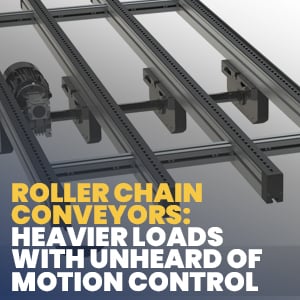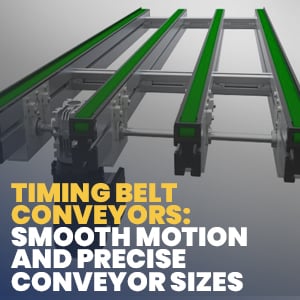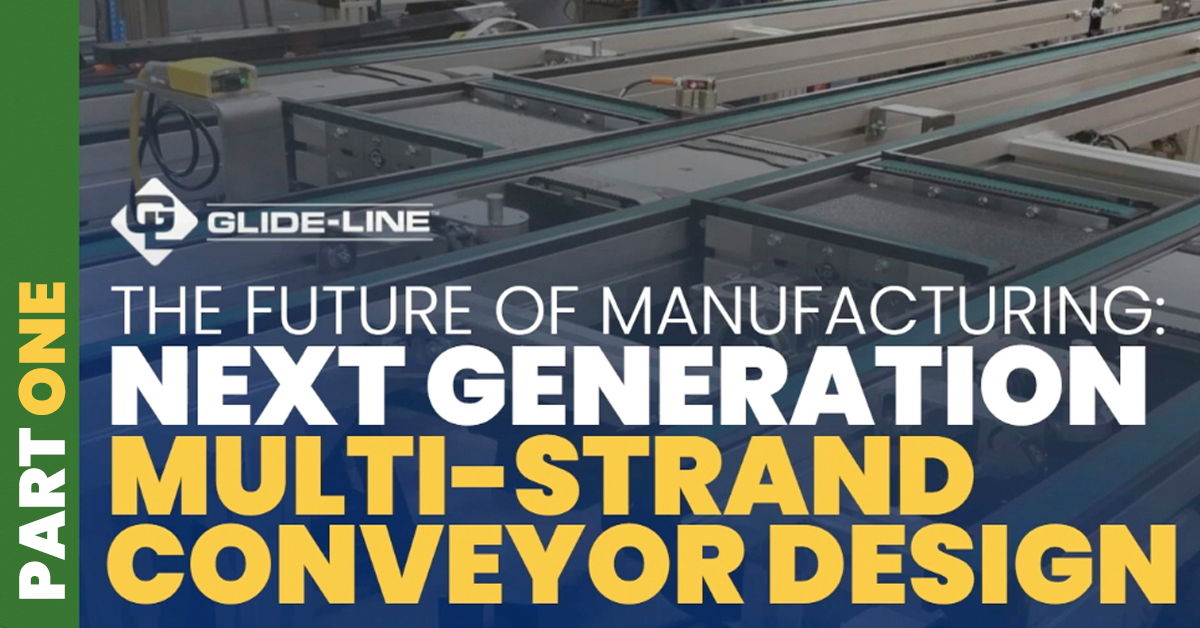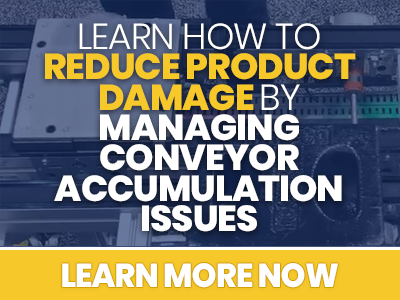In December of 2021, Kevin Mauger and Jenna Orrock were featured on a Design World Webinar called The Future of Manufacturing: Next Generation Multi-Strand Conveyor Design. In this blog, you can read through the main transcription, what was covered in the webinar, and/or watch clips directly from the webinar.
Manufacturing has been forced to take some big leaps in recent history to keep up with changing consumer demands, supply chain issues & COVID related obstacles, but also customer’s demanding ultimate flexibility & speed to keep up with both current and future operations. The new world for manufacturers has created both new opportunities and obstacles that we are all learning to navigate. There are three topics we will address, three areas of business our team have successfully navigated thus far, albeit, with many lessons learned along the way. I'll be diving into:
- Flexibility
- Agility and Speed
- Customer Experience
From the point of view of what we've all had to overcome in recent years and how that translates into creating The Future of Manufacturing for us all.
Some of the bigger industry trends that tie into these topics that we will be covering includes:
- Labor shortage
- High material costs
- Ergonomics on an assembly line - creating a safer environment for facility workers and adding automation to an assembly line
- Unpredictable demand (both high and low) of products and materials
- Material sourcing & international shipping / transportation obstacles
- Amazon Effect impacting customer expectations and the competitive landscape
We wanted to structure this webinar to show you what we've done to adapt to each of these trends and how we’ve been able to turn these commonly thought of, industry issues into an advantage for us and our customers.
On some slides you’ll see QR codes, if a specific topic piques your interest, simply pull up your phone's camera, tap on the QR code and the link with pop up, click that link to learn more about that specific topic.
With the speed at which business runs today and the lessons of 2020 in mind, flexibility as a goal will almost certainly be a much higher priority for manufacturers looking ahead.
When it comes to today’s automation market, many business owners and managers are being pressured to produce more, at a quicker pace and at a lower cost. This can impact everyone within the organization top down. Many companies and people have or are currently experiencing a call for:
- Reduced cycle times for longer production runs while improving safety / ergonomics for facility employees
- Adding more automation to address serious labor shortage issues
- Reduce product waste to an all time low, especially since many material costs are at a high
- Composing adaptive assembly lines that can be adjusted to accommodate updates to production - even accommodating different products.
- Maintaining a small, dynamic and efficient assembly line footprint so the entire facility can be optimized and maximized.
The new normal for manufacturing is requiring us to be nimble, to be flexible in every aspect from designing and optimizing production lines to adapting our work space environment. One pattern throughout these trends is automation - improved automation - better automation - flexible automation.
We’ll look at how this can trigger a new way of thinking, how to pivot and turn each of these tough obstacles into advantages for yourself and your business - to land in the Future of Manufacturing, but first here's how we've addressed the demand for supreme automation flexibility at Glide-Line.
We started by looking at our customers. We work primarily with engineers - Applications Engineers and Design Engineers, we mainly work with integrators but also end users who do their own integration. More often than not, we saw this demand for custom solutions. These engineers are being asked to design solutions that can improve cycle time, handle the test of time in terms of the products evolving while fitting everything into an area that is always too small and reducing product waste while being able to rely on less people working the line. They are tasked with dozens of issues. We've made it our mission to be the most flexible conveyor system manufacturer for them - our customers. I’d encourage you to also start looking at what flexibility means through the lens of your customers and what they are struggling with.

At Glide-Line, we've developed a modular approach which naturally became our vision for the future of manufacturing for Glide-Line. For us that meant top to bottom, creating an easy, flexible and economical way to create a custom system. Starting with the base systems all the way to our devices and accessories being designed:
Both of these base systems, Timing Belt & Roller Chain, can be customized for exact specifications, down to 1mm increments in both length and width. So if you’re conveying a simple pallet, a twin strand belt is a great start but if you’re conveying a large, wide solar panel, we can add more strands and space them out so it supports the load where required.
 Now let’s say we are working with a larger pallet or product like a refrigerator door that can be a bit heavier, we would use our roller chain conveyor which still has all the same flexibility as the timing belt solution, but can handle heavier loads with unheard of motion control. So when you need strong, controlled motion or flexible acceleration, this solution is outstanding. We found that while the typical roller chain based conveyors in the industry certainly have their place, the inability to control acceleration was a problem for our customers - especially customers with fragile products looking to reduce waste and damaged product.
Now let’s say we are working with a larger pallet or product like a refrigerator door that can be a bit heavier, we would use our roller chain conveyor which still has all the same flexibility as the timing belt solution, but can handle heavier loads with unheard of motion control. So when you need strong, controlled motion or flexible acceleration, this solution is outstanding. We found that while the typical roller chain based conveyors in the industry certainly have their place, the inability to control acceleration was a problem for our customers - especially customers with fragile products looking to reduce waste and damaged product.
Flexibility and agility is the name of the game for application engineers and design engineers, so while the modular base system is a great start, it’s not enough. We created this customized-standard library of solutions to address the product movement issues our customers are facings.
After a customer has selected the base system, they tend to start looking at the challenges for their given applications and facility, for example: Let's take a direct product handling application of an airplane wing - the engineer is likely looking for a solution that can gently handle the wing to eliminate the risk of damage to the product on the line while optimizing the assembly for a long product. For applications like that, our customers tend to look at adding solutions to the line like:
- Zero Contact Zoned Conveyor
- No product to product contact
- Gentler, more reliable and energy efficient conveyor solution
- Eliminates 100% of product contact and backpressure caused by accumulation.
- Rotation Units
- Rotate products, pallets, or even entire conveyors within your conveyor line.
- Built for precision positioning and smooth motion control
- Vertical Transfer Units
- VTUs are designed to reduce overall conveyor system floor space
- Multi-task with efficiency
- Improve Throughput
Our team is always standing by, ready to help develop the right solution, but what we find is many of the engineers want to do it on their own. More and more is being demanded of engineers, managers, really all of us in terms of production. So how can we get more done? How can we be more efficient and adapt to these expectations?
Like many engineers looking to find a solution & pricing on their own, we looked inward and decided that it wasn’t enough to just create the best solution for a customer’s application and facility, we needed to do it quickly, we needed to give our customers the power to design their solution on their own and get instant pricing. We had to provide the quickest lead times so we can meet the insane project challenges our engineering customers are facing.








Leave a Comment